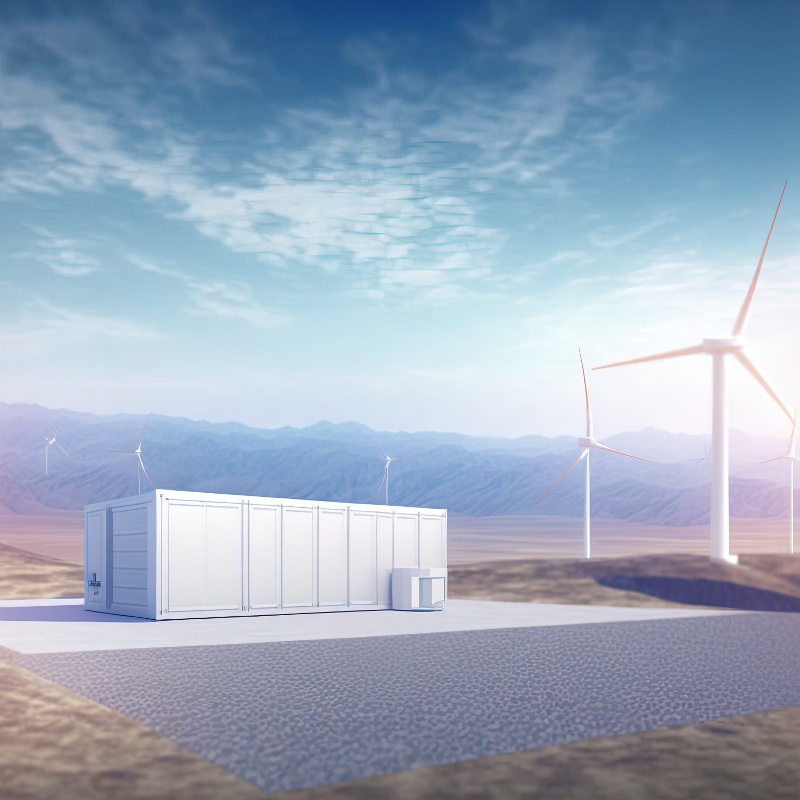As we become more conscious of our impact on the planet, finding sustainable energy sources has become increasingly important. Wind power has emerged as a significant player in the renewable energy sector, offering a cleaner and greener alternative to traditional polluting power plants.
Wind farms are popping up both on land and out in the open ocean, harnessing the power of the wind to generate clean energy for us all. But building these wind farms takes significant infrastructure, planning, and investment.
In this blog, we'll dive into the world of wind power, exploring the benefits and drawbacks of this incredible technology. We'll also take a closer look at the infrastructure requirements of wind farms and how they are built and connected to the grid. But perhaps most importantly, we'll discuss the importance of hazard protection measures for wind farms. After all, safety is a top priority when harnessing the power of the wind.
Imagine a world where we can generate electricity by simply harnessing the power of the wind. Wind turbines, like giant fans in reverse, use the kinetic energy of the wind to create electricity. As the wind flows across the turbine's rotor blades, it creates lift and drag, causing the rotor to spin. This rotation is then connected to a generator, which transforms the aerodynamic force into the electricity that powers our homes and businesses.
These incredible machines are part of larger wind farms that capture the endless power of the wind, with multiple turbines working together to generate electricity on a large scale. Onshore wind farms can be found on vast stretches of land and are usually connected to the national grid via underground cables. But offshore wind farms, which are situated in the middle of oceans or large bodies of water, require specialized buildings to house workers and equipment.
Wind energy is actually a form of solar energy created by the sun's uneven heating of the atmosphere, combined with the earth's irregular surface and rotation. The wind flow patterns and speeds are influenced by so many different factors, like bodies of water, vegetation, and changes in terrain.
One of the most significant advantages of wind energy is its potential to provide employment opportunities. The wind industry employs thousands of people in the US alone and is growing rapidly. It has the potential to create hundreds of thousands of additional jobs in the coming years, from blade fabricators to asset managers. Wind energy is a domestic resource that contributes to economic growth. Wind turbines operating in all 50 states generated more than 10% of the country's energy net total in 2022, while investments in new wind projects added $20 billion to the US economy that same year.

Wind energy is also a clean and renewable energy source that doesn't rely on fossil fuels, which means it doesn't emit greenhouse gases or contribute to climate change during energy production. This reduces our dependence on finite fossil fuels that will eventually run out and avoids millions of metric tons of carbon dioxide emissions annually, equivalent to 71 million cars worth of emissions. Plus, wind energy benefits local communities by providing additional revenue through state and local tax payments and land-lease payments.

However, wind energy has its challenges. Wind turbines must compete with other low-cost energy sources and require a significant upfront investment. Their ideal sites are often in remote locations, which creates installation challenges in bringing electricity from wind farms to urban areas. Wind turbines can also be noisy and alter visual aesthetics, potentially impacting local residents' quality of life. They also require a significant amount of land and resources for construction and maintenance, and their operation may pose a risk to wildlife.
Understanding the potential hazards of wind farms is crucial for ensuring worker and public safety. Wind turbines are incredibly tall structures, some over 100 feet tall. Because of their height, they can be affected by high winds, lightning strikes, and ice accumulation. To mitigate these risks, wind farms require robust hazard protection measures, including fire suppression systems, lightning protection, and insulation.

The challenge with wind power production is that it's dependent on weather patterns, making it intermittent rather than continuous. At RedGuard, we offer an innovative solution to address the intermittency problem in the wind industry - our Battery Energy Storage System (BESS) buildings. BESS buildings provide a reliable and efficient way to store excess power generated during peak production periods and release it when needed, helping to ensure a consistent energy supply.

BESS buildings are designed to contain lithium batteries, which are known for their high energy density and potential volatility. To ensure the safety of workers and the environment, we've taken great care to design these buildings with safety in mind.
Hazard protection measures are essential for ensuring the safety of workers and the public. Wind power has significant potential to reduce greenhouse gas emissions and transition toward a more sustainable energy future. By adopting comprehensive safety measures and investing in emerging technologies, we can ensure that wind power continues to play a critical role in meeting our energy needs while protecting our planet.
Your safety partner in threat mitigation for hazardous areas, providing safe spaces through customizable, scalable, modular buildings. The industry leader in blast-resistant buildings.